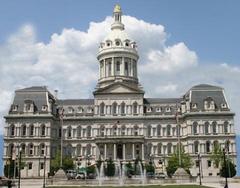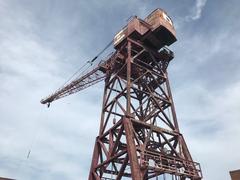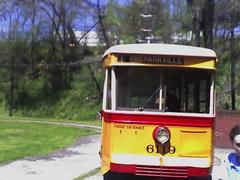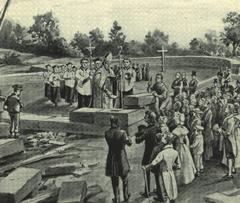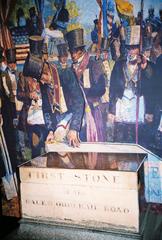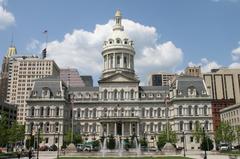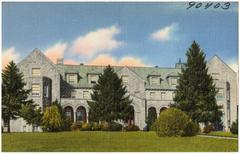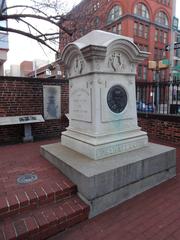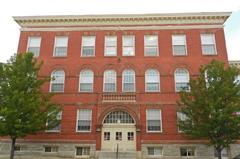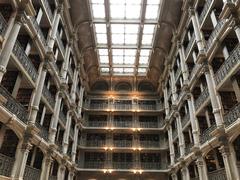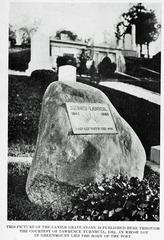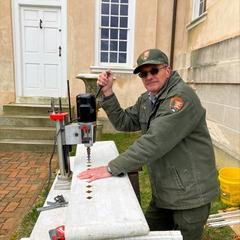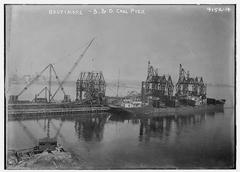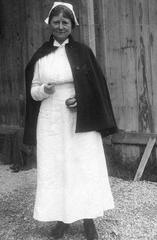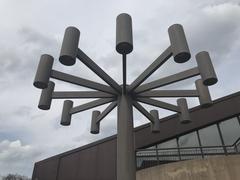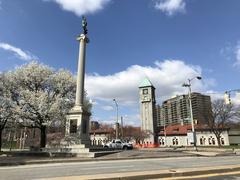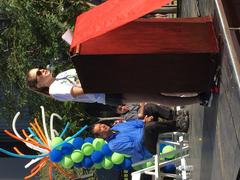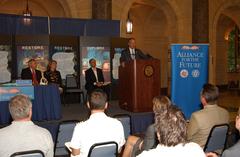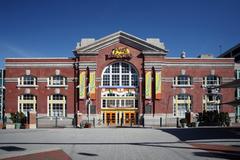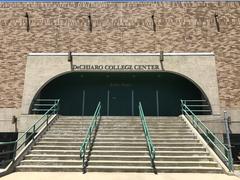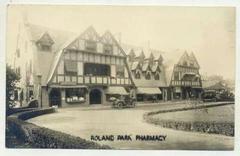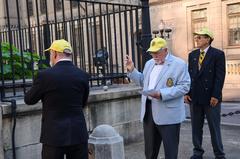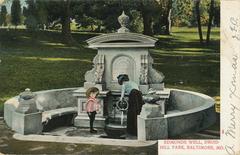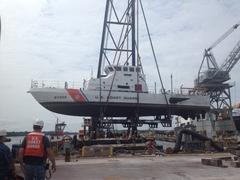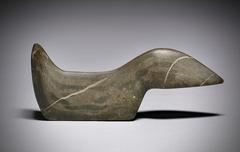MedStar Good Samaritan Hospital Visiting Hours, Tickets, and Baltimore Historical Sites Guide
Date: 04/07/2025
Introduction
MedStar Good Samaritan Hospital is a foundational healthcare provider in Baltimore, Maryland, acclaimed for its clinical excellence, innovation, and deep community roots. Since its establishment in the early 1960s, the hospital has evolved into a modern medical center serving the northeast Baltimore region with a comprehensive suite of specialties. This guide details the hospital’s history, milestones, and visitor information, while also highlighting the nearby Washington Monument—one of Baltimore’s top historical attractions. Whether you’re visiting a patient, attending a health event, or exploring local sites, this article equips you with essential information for a smooth experience.
Table of Contents
- History of MedStar Good Samaritan Hospital
- Practical Visitor Information
- Unique Features & Community Initiatives
- Washington Monument: A Baltimore Historical Landmark
- Frequently Asked Questions (FAQ)
- Conclusion and Resources
History of MedStar Good Samaritan Hospital
Founding and Early Development (1962–1970)
MedStar Good Samaritan Hospital was founded through the vision of Cardinal Lawrence Shehan and the philanthropic support of Thomas J. O’Neill, a prominent Baltimore businessman. Construction began in 1965 on a 14-acre plot at Loch Raven Boulevard and Belvedere Avenue, and the hospital officially opened in November 1968 (MedStar Health). Early leadership from the Sisters of Bon Secours and partnerships with Johns Hopkins University set a strong academic and service-oriented foundation (Wikipedia).
Innovative from the start, the hospital opened Maryland’s largest renal dialysis unit in 1970 and quickly established itself as a leader in advanced medical care.
Expansion and Community Engagement (1970s–1980s)
Throughout the 1970s, MedStar Good Samaritan advanced in orthopedic and rehabilitation medicine, performing Maryland’s first arthroscopy and total hip replacement in 1971. Its rehabilitation program, developed in collaboration with Johns Hopkins, received national accreditation (MedStar Health).
The hospital also deepened its community ties, launching its Auxiliary in 1973 and initiating its first community health fair, “Health Encounters,” in 1979. By the end of the 1980s, the hospital had expanded its facilities with new office buildings and the Belvedere Green living center for seniors.
Clinical Advancements and Partnerships (1990s–2000s)
The 1990s saw the opening of a modern emergency room and a dedicated Nursing Center. Preventive health services grew with the creation of the Good Health Center in 1992. In 1994, MedStar Good Samaritan joined the Helix Health Network and became part of MedStar Health in 1999, expanding its resources and regional influence (Wikipedia).
The early 2000s brought further enhancements, including a new emergency department and a globally broadcast hip replacement procedure, reflecting the hospital’s commitment to medical innovation (MedStar Health).
Modernization and Community Impact (2010s–Present)
In the 2010s, the hospital modernized its facilities and garnered national recognition for clinical specialties such as orthopedics, geriatrics, and nephrology (Wikipedia). Notable achievements include the establishment of the Center for Successful Aging in 2016, accreditations in mammography and cancer care, and ongoing investment in community health programs (MedStar Health; Zippia).
Leadership transitions, including the appointment of Thomas J. Senker as president in 2023, continue to guide the hospital’s mission of service and excellence.
Practical Visitor Information
Visiting Hours & Policies
- General Visiting Hours: 8:00 AM – 8:00 PM daily (may vary by department; check for updates during public health emergencies).
- Number of Visitors: Typically limited to two per patient at a time.
- Children: Children under 12 may have restricted access in certain units.
- Check-In: All visitors must register at the main lobby, present ID, and wear a visitor badge.
For up-to-date policies, call (443) 444-8000 or see the official hospital website.
Location, Directions, and Parking
- Address: 5601 Loch Raven Blvd, Baltimore, MD 21239
- Access: Easily reached by car and public transit (see MTA Maryland).
- Parking: Ample on-site parking (surface lots and a garage), including accessible spaces. Nominal fee applies; payment via cash or credit.
Accessibility
MedStar Good Samaritan Hospital is fully ADA-compliant, providing:
- Wheelchair-accessible entrances/restrooms
- Elevators with Braille signage
- TTY devices for hearing-impaired visitors
- Assistance and wheelchairs at the main entrance
Amenities and Support Services
- Cafeteria: Hot meals and snacks available; vending machines for after-hours refreshments
- Waiting Areas: Comfortable lounges near surgical and intensive care units
- Wi-Fi: Complimentary access throughout the hospital
- Pastoral Care, Social Work, Interpreter Services: Available to support patients and families
- Gift Shop: Flowers, cards, snacks, and essentials in the main lobby
Contacting Patients
Call (443) 444-8000 and request connection to a patient’s room. Patient’s full name and room number may be required.
Security, Safety, and COVID-19 Measures
- Security: 24/7 on-site staff; lost and found available
- COVID-19 Precautions: Masking and health screenings may be required during high-risk periods (Healthgrades Awards)
- Visitor Protocols: Check hospital updates before your visit
Unique Features & Community Initiatives
MedStar Good Samaritan Hospital stands out for its:
- Community Health Programs: Including health fairs, screenings, and outreach focused on social determinants of health (MedStar Health Community)
- 340B Program: Expanding access to essential medications and services
- Care Transformation Team: Collaborates with local organizations to support vulnerable populations (MedStar Health PDF)
- Patient Care Advisory Committee: Assists with complex medical and ethical decisions
- Auxiliary and Volunteers: Provide ongoing support for patients and hospital initiatives
Washington Monument: A Baltimore Historical Landmark
History and Significance
Baltimore’s Washington Monument, completed in 1829, is the nation’s first major tribute to George Washington. Designed by Robert Mills, it stands 178 feet tall in Mount Vernon Place, a historic district surrounded by museums, gardens, and cultural institutions (Official Washington Monument Baltimore Website).
Visiting Information and Tickets
- Hours: Tuesday–Sunday, 10:00 AM–5:00 PM (closed Mondays and major holidays)
- Tickets: $6 adults, $4 seniors (65+), $3 children 6–17, free for under 6. Purchase onsite or online.
- Access: Observation deck offers panoramic city views. Some areas have limited accessibility due to stairs; ground-level exhibits are wheelchair-accessible.
Guided Tours, Accessibility, and Nearby Attractions
- Guided Tours: Available daily; check schedules for details
- Accessibility: Ground floor and grounds are wheelchair-friendly, but observation deck is only accessible by stairs
- Amenities: Gift shop, restrooms, and café nearby
- Nearby Attractions: Walters Art Museum, Peabody Institute, restaurants, and Mount Vernon parks (Visit Baltimore; Mount Vernon Cultural District)
Frequently Asked Questions (FAQ)
MedStar Good Samaritan Hospital
Q: What are the current visiting hours?
A: Standard hours are 8:00 AM–8:00 PM; check for updates on the hospital website.
Q: Is on-site parking available?
A: Yes, with accessible spaces; nominal fee applies.
Q: Are visitor restrictions in place for COVID-19?
A: Policies may change based on public health guidelines. Masks and screenings may be required.
Q: How can I contact a patient?
A: Call (443) 444-8000 and provide the patient’s full name and room number.
Q: Does the hospital provide interpreter services?
A: Yes, upon request.
Washington Monument
Q: Are there restrictions on items brought inside?
A: Large bags, food, and drinks are prohibited. Photography without flash is allowed.
Q: Is the monument suitable for children?
A: Yes, with family-friendly programs available.
Q: Can tickets be purchased on the day of the visit?
A: Yes, but advance online booking is recommended.
Conclusion
MedStar Good Samaritan Hospital remains a pillar of compassionate healthcare and community service in Baltimore, blending historic values with cutting-edge medicine and robust outreach (MedStar Health; Wikipedia). Visitors benefit from accessible facilities, clear policies, and supportive amenities. For those seeking cultural enrichment, the nearby Washington Monument offers a window into the city’s history and vibrant arts scene.
Stay informed by visiting the hospital’s official website, checking local travel guides, and exploring Baltimore’s renowned historical sites.
Call to Action:
For real-time updates on MedStar Good Samaritan Hospital and Baltimore attractions, download the Audiala app and follow our social media pages. Explore our related guides on healthcare providers and historical destinations to make the most of your visit.
References and Official Links
- MedStar Good Samaritan Hospital: About Our Hospital
- MedStar Good Samaritan Hospital, Wikipedia
- MedStar Good Samaritan Hospital Community Health
- Healthgrades Awards Profile
- MedStar Good Samaritan Hospital Newsletter
- MedStar Good Samaritan Hospital Official Site
- MTA Maryland Transit Info
- Zippia: Hospital History
- Official Washington Monument Baltimore Website
- Baltimore National Heritage Area
- Visit Baltimore Tourism Site
- Mount Vernon Cultural District

